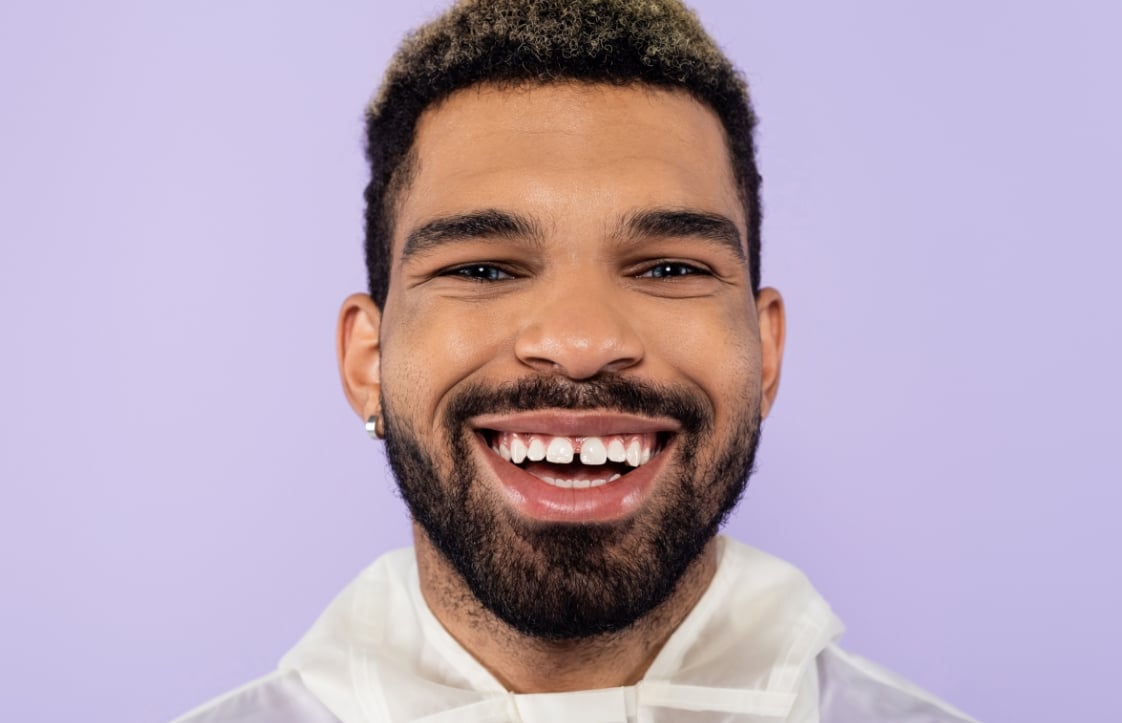Portraiture is a photographic style aimed at showing the physical, emotional and moral qualities of the subject.
Photographic portraits have been around since the beginning of photography, and were first offered by travel and commercial photographers in Paris.
Early exponents included Nadar, Disdéri, Julia Margaret Cameron, Lewis Carroll, Gustave Le Gray, Étienne Carjat, Antoine Samuel Adam-Salomon, Pierre Petit and Lady Clementina Hawarden.

Photographic portraits evolved with the history of photography. As well as professionals specialising in portraiture in its traditional form, new movements emerged that experimented and innovated with portraiture approaches and techniques.
Among the most notable modern practitioners of portrait photography are Richard Avedon, Brassaï, Walker Evans, and August Sander.

The technical features of a photo portrait
To take great photographic portraits, you need in-depth knowledge of how your camera and lighting equipment work, to take advantage of light variations during the day and select the best position for you subject. But, most importantly, you need to be friendly and put your subject at ease.
You also need a firm idea to start from, and to create the conditions required to capture a picture that is as near as possible to your vision. This means identifying the right position for the lighting, scouting the perfect setting and placing the subject in a position that highlights their physical features in a positive, natural and respectful way.

Respect is not something you should underestimate: your subject should have a positive experience and feel at ease throughout, otherwise you risk compromising the portrait due to their discomfort or embarrassment.
So, during a session, the photographer should guide the subject, building rapport by being friendly and encouraging, in order to obtain natural facial expressions that communicate the emotions the photographer wants to capture with their pictures.
Medium telephoto lenses with an equivalent focal length between 70 mm and 130 mm (35 mm for standard format) are the best lenses for photographic portraits.

These telephoto lenses help the photographer to place the subject at a suitable distance to avoid any feeling of awkwardness. In addition, they are perfect for unposed portraits because the distance may help to make the subject forget there is a photographer around and act more naturally.
From a technical point of view, a longer focal length slightly flattens the facial features of the subject, so you’ll obtain a portrait without aliasing.
In addition to a wide aperture, these focal lengths allow you to make the subject stand out against a blurred background. They also let you take your shots in low-light conditions without the need to excessively raise the ISO value when you’re not using the flash.

TIPS FOR PHOTO PORTRAITS: EMOTIONAL INVOLVEMENT
One aspect that can make a big difference in a photo portrait has nothing to do with technique: a subject’s emotional involvement. The final result will much depend on how engaged they are and how much freedom of expression you give them.
Involve your subject for a better photo portrait
What makes photography so intriguing is its creative and subjective side. The photographer’s ability to move the viewer emotionally depends on more than just their choice of lens: it’s about their sensitivity.
Creative and subjective elements have nothing to do with pure technique but still have an enormous impact on the quality of a picture. Think of the portraits you’ve seen over the years: how many felt cold and empty, even though they were technically excellent?

Often, it’s not the subject’s fault, but rather down to the photographer’s lack of empathy that compromised their relationship.
Striking and unusual physical features make for effective portraits
Photo portraiture is a peculiar genre.
Portraits look so similar and very few stand out.
So, the question is: how can your portrait stand out and shine?
Let’s try to analyse the features successful portraits have in common. Striking and unusual physical features stand out from the ordinary and catch our eye at the first glance. An average face is not enough to make an extraordinary photo portrait. Of course, unusual physical features are not easy to find, which means that finding the right subject can be a painstaking and time-consuming process.
Photo portraits: when meaning goes beyond the picture
Photo portraits often have layers of meaning that go beyond the simple representation of a subject. They are a way of provoking thoughts, emotions, and debates by using the subject to show the world warts and all. For example, the picture of a homeless person can highlight poverty in society, but also dignity in the face of adversity.

Photo portraits often contain metaphors, and such depth can inspire and intrigue the viewer.
What makes such “metaphorical” pictures so successful is the highlighting of details, in the subject or in the background, that add layers of meaning to the photo portrait. But it requires skill to imagine and visualise the meaningful elements in the picture before you take it. If you place significant details in the picture, you make the link between them and the subject explicit and place it all in the right setting, then you have all the ingredients for extremely effective pictures.
Photo portraits: the role of the relationship
You can’t work on a photographic portrait without creating a relationship, as minimal as it might be, with the subject. It might be no more than small talk, but you can’t avoid it.
A good photographer knows how to manage this relationship as part of the process, without crossing boundaries or keeping too much of a distance. Going too far in either direction can compromise the final result.
If the session is planned in good time, you can get acquainted with your subject well before the photographic session. This way you can know each other enough to limit any anxiety on set. Getting familiar with the subject means building mutual trust, which is useful when you’re shooting as it will put the subject feel at ease.

The main thing is to have a nice conversation without waffling on too much. To make the subject feel comfortable, it’s enough to give the impression that you know what you’re doing do and give instructions that will help them pose and express themselves naturally.
Impromptu portraits happen too. You don’t always have time to plan everything. Just ask the subject’s permission, verbally or with gestures, if you’re abroad. If the subject agrees, be respectful, and don’t get in the way if they are busy when you take your picture. If they agree to pose, take a little time to create rapport without taking liberties.

Successful photo portraits: build rapport to bring out your subject’s soul
If you don’t build rapport with at least a little chat with your subject, you may struggle to capture their personality and the interesting stories hidden within them.
If you don’t ask, you’ll never know, right?
Telling a complete story with a single picture is not an easy task, but you can help the viewer piece it together through the details you’ll capture in your photo portrait: a scar, an unusual piece of clothing, the place where the picture is set, it all helps in telling a story that adds layers of meaning to the portrait.
Photo portraits: the photographer, the subject and the viewer
As we’ve seen, technique is not the only factor that determines the success of a photographic portrait.
Photo portraits are built around a dialogue between the photographer, the subject and the viewer. The last part of this dialogue takes place once the picture is exhibited.
Unfortunately, you cannot control the viewer’s senses because everyone’s gaze is informed by a different, unique inner world. Nevertheless, your aesthetic choices and metaphors will help highlight certain aspects, features and peculiarities of your subjects and make the viewer focus on them. This will help the viewer to understand the emotions you want to convey with your picture.

A useful suggestion, without getting into academic psychology, is to play with archetypes and universally recognised symbols that are familiar to everyone.
In the dialogue between photographer, subject and viewer, you have to use your ideas and aims to bring out your subject’s unique personality. Your subject needs to feel free to be themselves naturally and without feeling awkward. The viewer will then be left to take in the beauty of your picture and the emotion you want to convey through the details highlighted in your portrait.
Photo portraits are a wonderful, three-way dance: the magic happens when the worlds of the photographer, subject and viewer meet.

